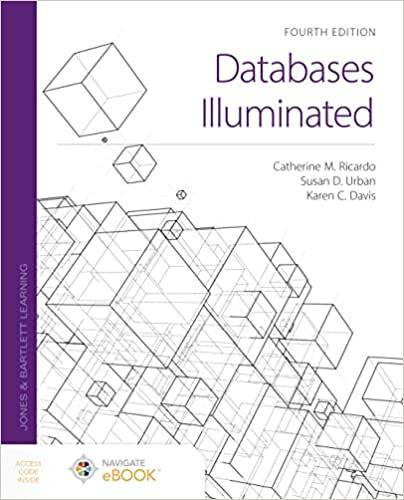Question
Java Question: Your task is to implement a parallel sorting algorithm such that each partition of the array is sorted in parallel. You should consider
Java Question:
Your task is to implement a parallel sorting algorithm such that each partition of the array is sorted in parallel. You should consider two different schemes for deciding whether to sort in parallel.
A cutoff (defaults to, say, 1000) which you will update according to the first argument in the command line when running. It's your job to experiment and come up with a good value for this cutoff. If there are fewer elements to sort than the cutoff, then you should use the system sort instead.
Recursion depth or number of available threads. Using this determination, you might decide on an ideal number (t) of separate threads (stick to powers of 2) and arrange for that number of partitions to be parallelized (by preventing recursion after depth of lg t is reached).
The Main class can be used as is but the ParSort class needs to be implemented where you see "TODO..."
Main class:
| import java.util.Random; | |
| public class Main { | |
| public static void main(String[] args) { | |
| if (args.length>0) ParSort.cutoff = Integer.parseInt(args[0]); | |
| Random random = new Random(0L); | |
| int[] array = new int[2000]; | |
| for (int i = 0; i < array.length; i++) array[i] = random.nextInt(10000); | |
| ParSort.sort(array, 0, array.length); | |
| //for (int i : array) System.out.println(i); | |
| if (array[0]==11) System.out.println("Success!"); | |
| } | |
| } |
ParSort class:
| import java.util.Arrays; | |
| import java.util.concurrent.CompletableFuture; | |
| class ParSort { | |
| public static int cutoff = 1000; | |
| public static void sort(int[] array, int from, int to) { | |
| int size = to - from; | |
| if (size < cutoff) Arrays.sort(array, from, to); | |
| else { | |
| CompletableFuture | |
| CompletableFuture | |
| CompletableFuture | |
| thenCombine(parsort2, (xs1, xs2) -> { | |
| int[] result = new int[xs1.length + xs2.length]; | |
| // TODO implement me | |
| return result; | |
| }); | |
| parsort.whenComplete((result, throwable) -> {}); // TODO implement me | |
| parsort.join(); | |
| } | |
| } | |
| private static CompletableFuture | |
| return CompletableFuture.supplyAsync( | |
| () -> { | |
| int[] result = new int[to - from]; | |
| // TODO implement me | |
| return result; | |
| } | |
| ); | |
| } | |
| } |
Step by Step Solution
There are 3 Steps involved in it
Step: 1

Get Instant Access to Expert-Tailored Solutions
See step-by-step solutions with expert insights and AI powered tools for academic success
Step: 2

Step: 3

Ace Your Homework with AI
Get the answers you need in no time with our AI-driven, step-by-step assistance
Get Started


